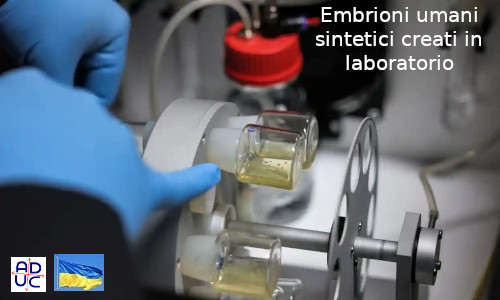“We can create models similar to human embryos by reprogramming cells [staminali embrionali]”he said at the meeting.
There is no short-term prospect of synthetic embryos being used clinically. It would be illegal to implant them in a patient’s uterus, and it’s not yet clear whether these structures have the potential to continue to mature beyond the earliest stages of development.
The motivation for the work is for scientists to understand the developmental period of the “black box”, so called because scientists are only allowed to grow embryos in the laboratory up to a legal limit of 14 days. They then pick up the course of development much later by looking at pregnancy scans and donated embryos for research.
Robin Lovell-Badge, head of stem cell biology and developmental genetics at the Francis Crick Institute in London, said: ‘The idea is that if you really model normal human embryonic development using stem cells, you can get a huge amount of information on how we start development, what can go wrong, without having to use early embryos for research”.
Previously, ?ernicka-Goetz’s team and a competitor group at the Weizmann Institute in Israel demonstrated that stem cells from mice could be encouraged to self-assemble into early embryonic structures with an intestinal tract, the beginnings of a brain, and a beating heart. Since then, a race has been underway to translate this work into human models, and several teams have been able to replicate the very early stages of development.
Full details of the latest work, from the Cambridge-Caltech lab, have yet to be published in a journal. But, speaking at the conference, ?ernicka-Goetz described the cultivation of embryos at a stage just beyond the equivalent of 14 days of development for a natural embryo.
The model structures, each grown from a single embryonic stem cell, have reached the beginning of a developmental milestone known as gastrulation, when the embryo transforms from being a continuous sheet of cells to forming distinct cell lineages and then setting the basic axes of the body. At this stage, the embryo does not yet have a beating heart, gut or beginning of brain, but the model has shown the presence of primordial cells which are the precursor cells of the egg and sperm.
“Our human model is the first three-line human embryo model specifying amniotic and germ cells, egg and sperm precursor cells,” ?ernicka-Goetz told the Guardian before the speech. “It’s beautiful and created entirely from embryonic stem cells.”
The development highlights how rapidly science in this field has passed the law and scientists in the UK and elsewhere are already moving to develop voluntary guidelines to govern work with synthetic embryos. “If the whole intention is for these models to be very similar to normal embryos, then in a sense they should be treated the same way,” Lovell-Badge said. “Currently in the legislation they are not. People are worried about this.”
There is also a significant unanswered question as to whether these structures, in theory, have the potential to grow into a living creature. It has been reported that synthetic embryos grown from mouse cells look nearly identical to natural embryos. But when they were implanted in the wombs of female mice, they didn’t develop into live animals. In April, researchers in China created synthetic embryos from monkey cells and implanted them in the wombs of adult monkeys, some of which showed the first signs of pregnancy but none of which continued to develop beyond a few days. Scientists say it is unclear whether the obstacle to further development is merely technical or has a more fundamental biological cause.
“It is very difficult to answer. It will be hard to tell if there is an inherent problem with them or if it is just technical,” Lovell-Badge said. This unknown potential has made the need for stronger legislation urgent, she said.
(Hannah Devlin su The Guardian del 14/06/2023)
the association does not receives and is against public funding (also 5 per thousand)
Its economic strength are inscriptions and contributions donated by those who deem it useful
DONATE NOW
